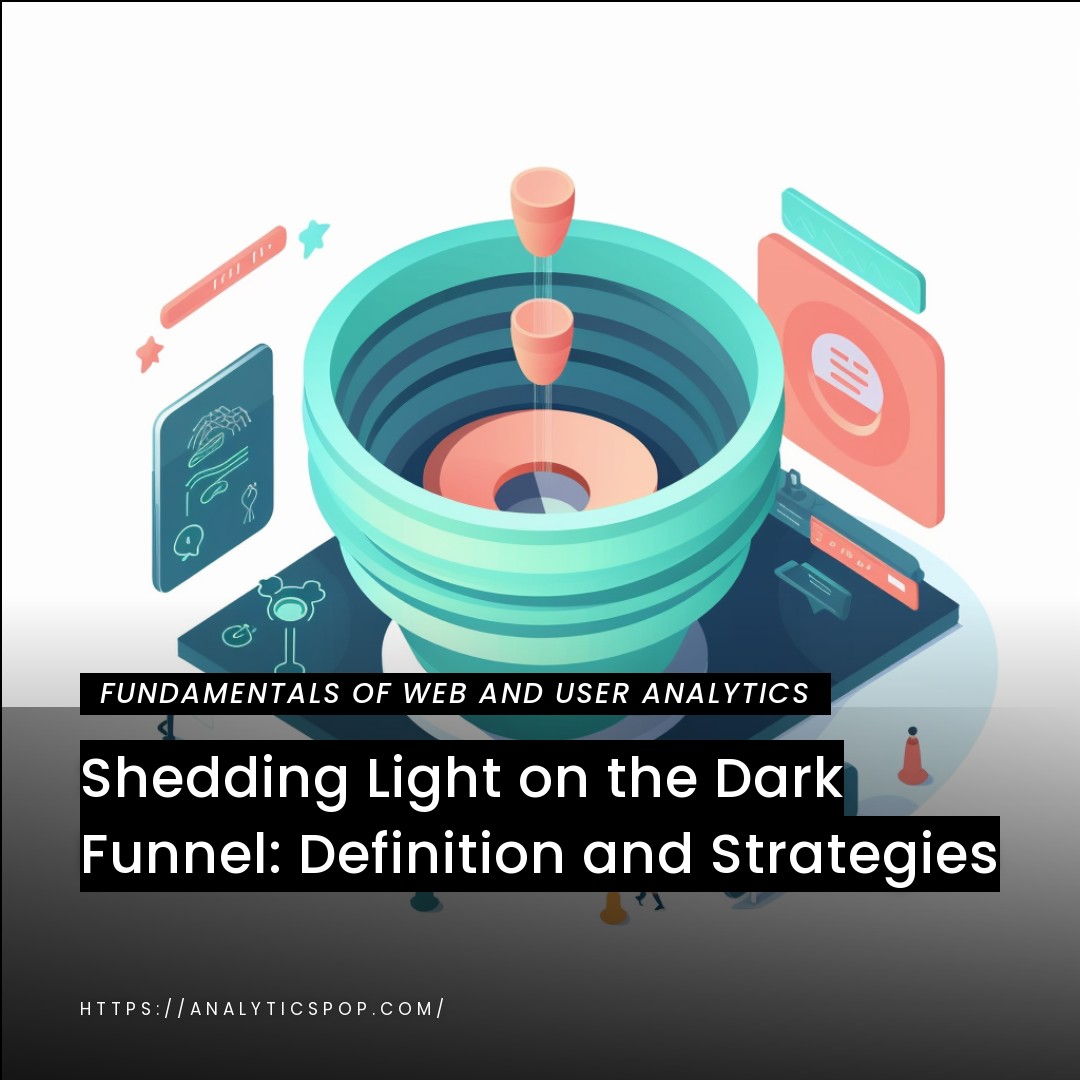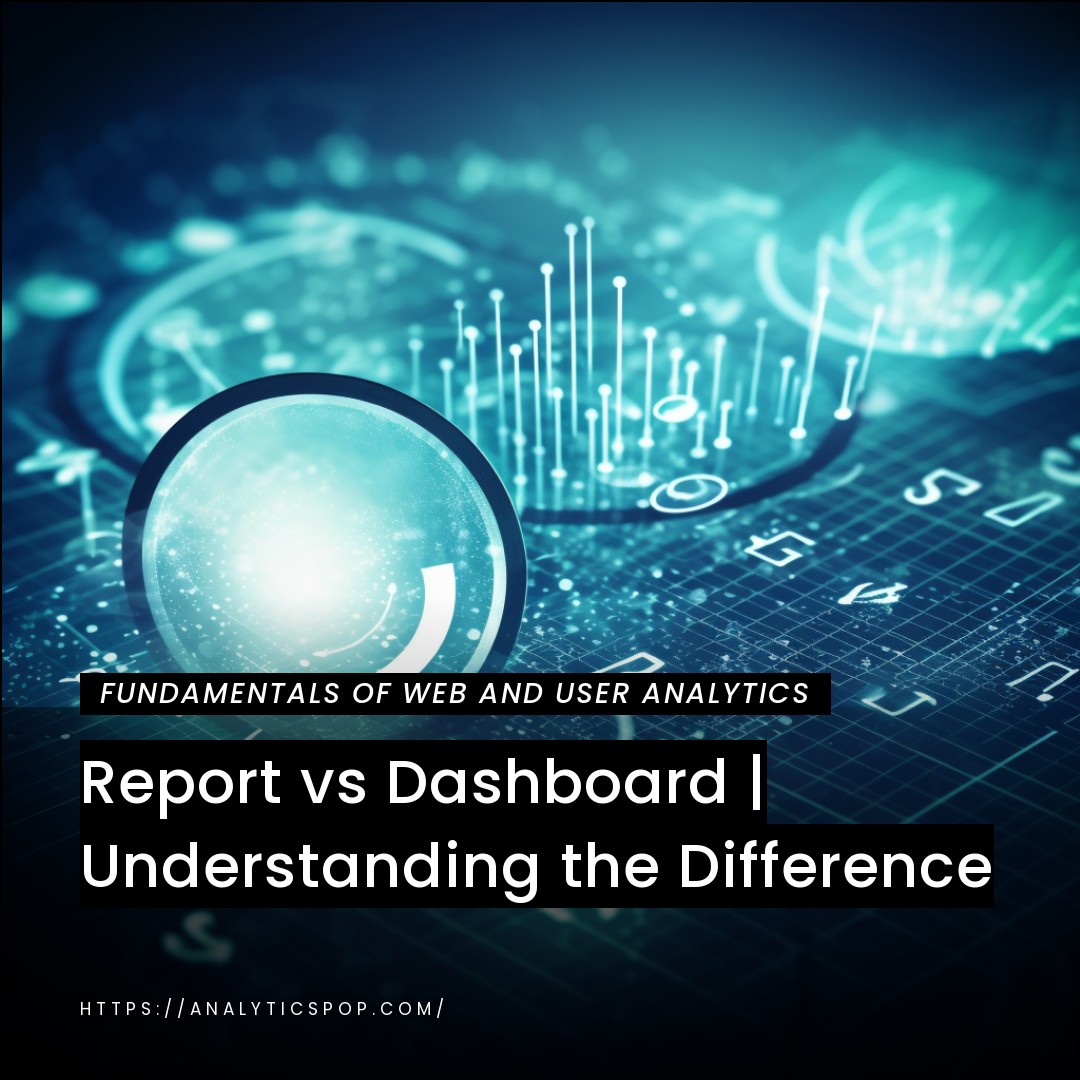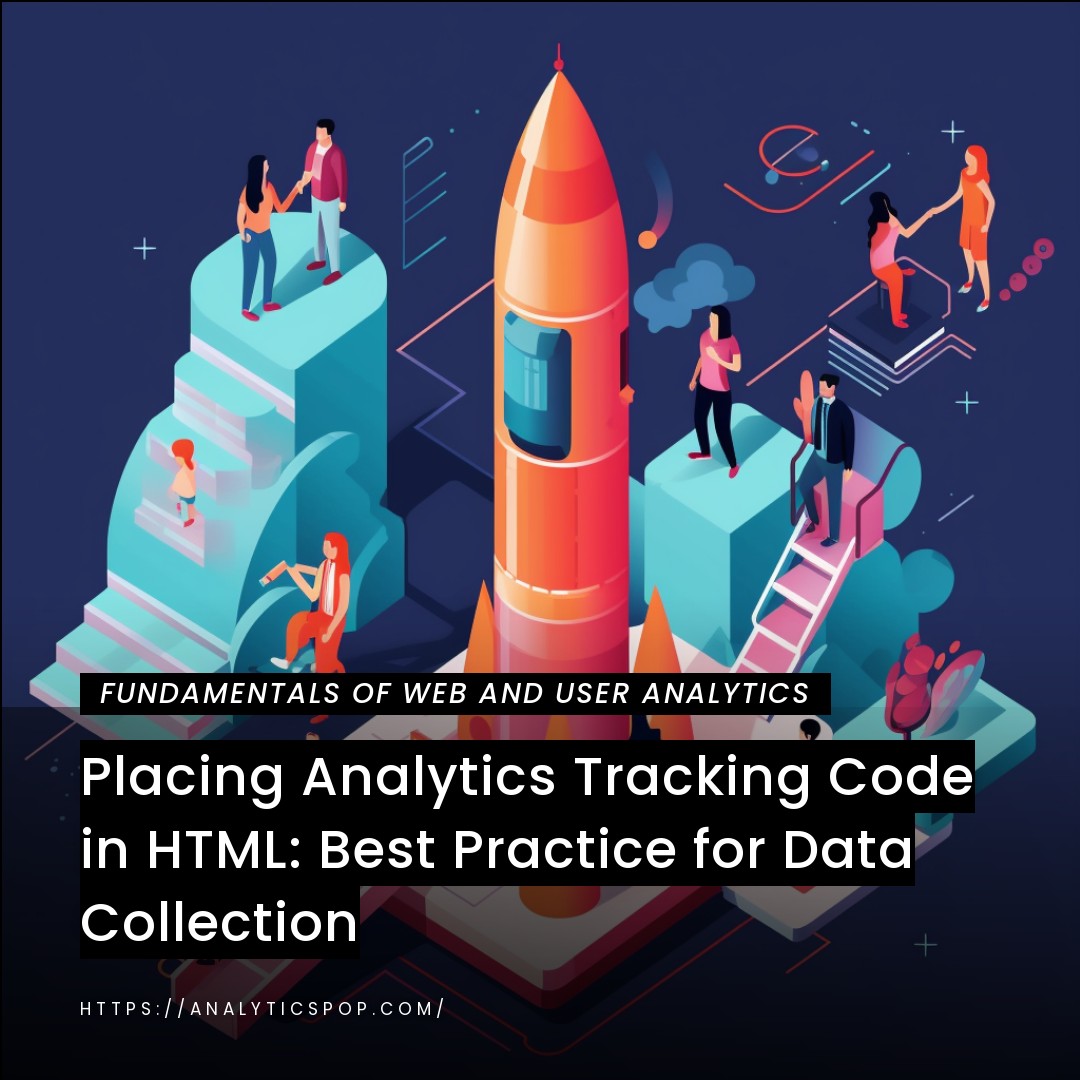Unveiling the Dark Funnel: Strategies to Illuminate Hidden Marketing Insights
In today’s digital landscape, understanding the effectiveness of marketing campaigns is crucial for businesses seeking to maximize their online presence. However, most user behavior occurs within the “dark funnel,” leaving marketers in the dark about valuable insights. The dark funnel refers to the gap in visibility that arises when users engage with marketing content through channels like encrypted messaging apps, email, or direct website traffic.
Businesses can employ various strategies to illuminate this hidden realm and gain a comprehensive understanding of user behavior. One approach involves leveraging UTM parameters to track links and campaigns across different channels. By attaching unique identifiers to URLs, marketers can trace the origin of traffic and measure the performance of specific campaigns with precision.
Additionally, utilizing customer relationship management (CRM) tools can illuminate the dark funnel. CRM platforms enable businesses to track and analyze customer interactions, providing valuable insights into the customer journey. By integrating CRM data with marketing analytics, marketers can gain a holistic view of user behavior, identifying touchpoints that drive conversions.
Furthermore, employing advanced analytics techniques, such as multi-touch attribution modeling, can help businesses attribute conversions to the most influential marketing touchpoints. This approach considers various touchpoints a user encounters before converting, allowing marketers to allocate resources effectively and optimize their marketing strategies.
Unveiling the dark funnel is essential for businesses to unlock hidden marketing insights. By implementing strategies like UTM parameter tracking, leveraging CRM tools, and employing advanced analytics techniques, companies can comprehensively understand user behavior and make data-driven decisions to enhance their marketing efforts.
Understanding the Dark Funnel in Marketing Analytics
In marketing analytics, the dark funnel refers to the elusive and often untraceable customer journey that occurs outside the traditional tracking mechanisms. It represents the user behavior and interactions that happen through channels that are not easily monitored, such as private messaging apps, dark social, or direct website visits. Marketers can employ various strategies to better understand the dark funnel.
- One practical approach is to leverage advanced tracking technologies like pixel tracking or fingerprinting. These methods allow businesses to capture data and attribute it to specific users even when they engage through encrypted messaging or other untraceable channels.
- Another strategy involves conducting customer surveys and interviews to gather insights directly from users. Marketers can uncover valuable information about the dark funnel and identify potential gaps in their tracking mechanisms by asking specific questions about their discovery process and the channels they use to interact with brands.
- Furthermore, analyzing referral patterns and trends can provide valuable insights into the dark funnel. Marketers can identify patterns and trends that may indicate the influence of dark social sharing or direct website visits by monitoring incoming traffic from unidentified sources.
- Additionally, leveraging machine learning and AI algorithms can help uncover hidden patterns within the dark funnel. These technologies can analyze large volumes of data, detect correlations, and identify commonalities in user behavior, shedding light on previously invisible touchpoints and interactions.
Understanding the dark funnel in marketing analytics is crucial for businesses aiming to optimize their strategies and improve campaign effectiveness.
By employing advanced tracking technologies, conducting user surveys, analyzing referral patterns, and leveraging AI algorithms, marketers can gain valuable insights into the hidden customer journey and make informed decisions to enhance their marketing efforts.
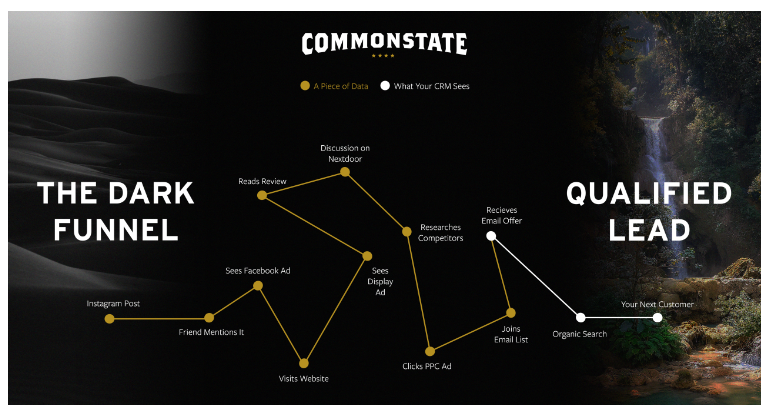
The concept of the dark funnel and its significance in marketing analytics
The Concept of the Dark Funnel and its Significance in Marketing Analytics
In the ever-evolving world of digital marketing, understanding user behavior and the effectiveness of marketing efforts is critical for businesses. However, many customer interactions occur within the “dark funnel,” presenting a challenge for marketers seeking comprehensive insights. The dark funnel refers to the anonymous or untraceable touchpoints and channels that users engage with, making it difficult to track and attribute conversions accurately.
The significance of the dark funnel in marketing analytics lies in its potential to reveal hidden opportunities and gaps in a brand’s understanding of customer behavior. While traditional analytics tools can track and measure interactions on visible channels like search engines or social media platforms, they often need to capture the full customer journey.
By uncovering the dark funnel, marketers can better understand their target audience, identify missed conversion opportunities, and optimize their marketing strategies accordingly. It allows them to fill the gaps in their data and track the customer journey from the initial touchpoint to the final conversion, regardless of the channels involved.
Furthermore, the dark funnel can offer valuable insights into the impact of word-of-mouth marketing, private messaging apps, direct website visits, and other untraceable channels. Understanding how users discover and engage with a brand outside the traditional tracking mechanisms can help marketers refine their messaging, allocate resources effectively, and tailor their campaigns to meet customer needs.
The concept of the dark funnel in marketing analytics represents the hidden and untraceable customer interactions that occur outside traditional tracking mechanisms. Unveiling the dark funnel is crucial for businesses to understand their target audience and optimize their marketing strategies comprehensively. Marketers can uncover hidden opportunities, fill data gaps, and make informed decisions to drive better results in an increasingly complex digital landscape.
Dark Funnel: Hidden customer touchpoints and unattributed marketing activities
The dark funnel refers to hidden customer touchpoints and unattributed marketing activities outside traditional tracking and attribution methods. It represents the gap in visibility where customers interact with a brand through channels that are difficult to trace, such as private messaging apps, direct website visits, or dark social platforms.
Unlike visible channels like search engines or social media platforms, the dark funnel encompasses challenging interactions to track and attribute accurately. These interactions often need more identifiable referral sources or campaign tracking parameters, making it difficult for marketers to measure their impact and understand their contribution to conversions.
The significance of the dark funnel lies in the insights it can provide about customer behavior and the potential missed opportunities for businesses. By uncovering these hidden touchpoints, marketers can better understand the customer journey, identify gaps in their tracking mechanisms, and refine their marketing strategies accordingly.
Moreover, the dark funnel sheds light on the influence of word-of-mouth marketing and the impact of customer recommendations shared through private channels. Although untraceable through traditional means, these interactions can significantly impact brand perception and purchase decisions.
To address the challenges posed by the dark funnel, marketers can employ advanced tracking technologies, conduct customer surveys and interviews, analyze referral patterns, and leverage artificial intelligence and machine learning algorithms to uncover hidden patterns and correlations within the data.
The dark funnel represents the hidden customer touchpoints and unattributed marketing activities outside traditional tracking methods.
Understanding the dark funnel is essential for marketers to gain a holistic view of the customer journey, identify missed opportunities, and optimize their marketing strategies for enhanced results.
Challenges associated with tracking and measuring dark funnel activities
Tracking and measuring dark funnel activities pose several challenges for marketers due to the elusive nature of these interactions. Here are some key challenges associated with tracking and measuring the dark funnel:
- Lack of visibility: The primary challenge of the dark funnel is the limited visibility into customer touchpoints and interactions. Unlike traditional channels with built-in tracking mechanisms, dark funnel activities occur on platforms that do not provide accessible data or referral sources.
- Attribution complexity: Dark funnel interactions often lack clear attribution paths. With identifiable referral sources or campaign tracking parameters, it becomes easier to attribute conversions accurately to specific marketing efforts or channels. This makes it challenging to assess the effectiveness of individual campaigns or optimize marketing strategies accordingly.
- Data fragmentation: Dark funnel activities occur across various channels, such as private messaging apps, email, and direct website visits. Each channel may have its own data silos and tracking methods, leading to fragmented data. Integrating and consolidating data from these disparate sources can be complex and time-consuming, making gaining a comprehensive view of customer behavior difficult.
- Privacy and encryption: Many dark funnel activities occur on encrypted messaging platforms or private conversations, prioritizing user privacy. While this is essential for user trust and security, it presents a challenge for marketers trying to track and measure these interactions. The encryption and privacy measures limit data access and make it harder to attribute conversions accurately.
- Lack of user cooperation: In the dark funnel, users may not willingly disclose the channels or sources through which they discovered a brand or product. This lack of cooperation hinders marketers’ ability to gather accurate data and insights about the customer journey, making it challenging to measure the impact of specific marketing efforts.
To overcome these challenges, marketers can employ advanced tracking technologies, customer surveys and interviews, data analysis techniques, and AI algorithms to uncover hidden patterns and correlations. By adopting a multi-faceted approach, marketers can better understand the dark funnel and make more informed decisions to optimize their marketing strategies.
The Impact of the dark funnel on marketing effectiveness and ROI
The dark funnel can significantly impact marketing effectiveness and return on investment (ROI) due to its untraceable and unattributed nature. Here are some key ways the dark funnel can influence marketing effectiveness and ROI:
- Incomplete attribution: The dark funnel often represents a substantial portion of customer interactions that cannot be accurately attributed to specific marketing efforts or channels. This vague attribution hinders marketers’ understanding of which campaigns or touchpoints drive conversions. As a result, they may need to allocate resources more efficiently and make suboptimal decisions regarding budget allocation and campaign optimization.
- Missed conversion opportunities: Hidden customer touchpoints within the dark funnel can lead to missed conversion opportunities. With visibility into these interactions, marketers may know the influential factors or channels contributing to customer decision-making. This lack of insight can result in missed opportunities to engage and convert potential customers, ultimately impacting the overall effectiveness of marketing efforts.
- Inaccurate ROI calculations: The inability to track and attribute conversions accurately from the dark funnel can lead to erroneous ROI calculations. When a significant portion of marketing activities and modifications goes unattributed, marketers may need to pay more attention to the true impact of their campaigns. This can result in misleading ROI calculations, challenging assessing the actual return on marketing investment.
- Limited optimization capabilities: The dark funnel’s lack of visibility and attribution can hinder marketers’ ability to optimize their campaigns effectively. With comprehensive data on the customer journey, it becomes easier to identify and optimize underperforming touchpoints or channels. This limitation can prevent marketers from making data-driven decisions to improve campaign effectiveness and drive better ROI.
To mitigate the impact of the dark funnel on marketing effectiveness and ROI, marketers can adopt strategies like advanced tracking technologies, customer surveys, and data analysis techniques. By uncovering hidden touchpoints and leveraging customer insights, marketers can better understand the customer journey, optimize their campaigns, and make informed decisions to maximize marketing effectiveness and ROI.
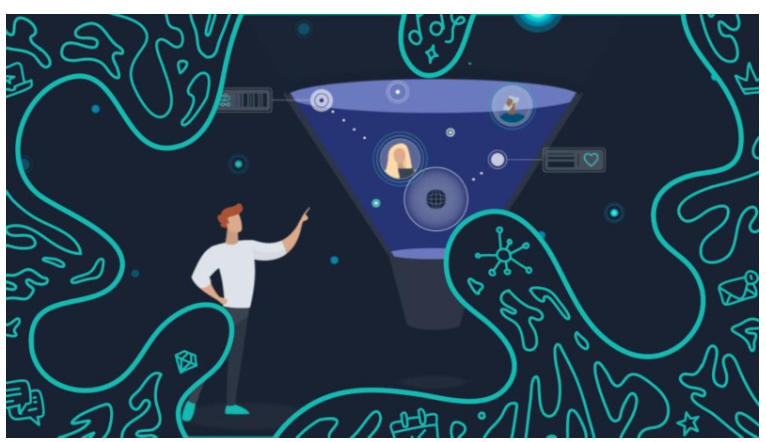
Strategies for Illuminating the Dark Funnel
Marketers can employ several strategies to illuminate the dark funnel and gain insights into the hidden customer touchpoints. Here are some effective techniques for decorating the dark horn:
- Implement UTM parameters: Utilize UTM (Urchin Tracking Module) parameters in your URLs across various marketing channels. By adding unique identifiers to the URLs shared in campaigns, you can track the origin of traffic and measure the performance of specific campaigns accurately. This allows you to attribute conversions to their respective sources and gain insights into the previously untraceable dark funnel.
- Leverage customer surveys and interviews: Conduct surveys or interviews to gather customer feedback. Ask questions about their discovery process, channels to engage with your brand and communication preferences. This approach can provide valuable insights into the dark funnel by revealing the hidden touchpoints and channels customers use during their decision-making journey.
- Analyze referral patterns: Analyze referral patterns to identify traffic sources that are not readily traceable. Look for unidentified or unknown incoming traffic sources and evaluate patterns and trends. This analysis can indicate dark social sharing, direct website visits, or other unattributed touchpoints within the dark funnel.
- Utilize advanced analytics techniques: Employ advanced analytics techniques like multi-touch attribution modeling. This method considers multiple touchpoints and interactions a user encounters before converting. By analyzing the sequence and impact of touchpoints, you can attribute conversions more accurately and gain insights into the effectiveness of different marketing efforts.
- Explore social listening tools: Utilize social listening tools to monitor conversations and mentions of your brand across various social media platforms and private channels. These tools can help uncover discussions and interactions within the dark funnel, providing insights into customer sentiment, preferences, and unattributed touchpoints.
- Leverage customer relationship management (CRM) tools: Integrate CRM tools with your marketing analytics to gain a comprehensive view of customer interactions. CRM platforms track customer behavior and interactions across multiple channels, enabling you to connect the dots between identified and unidentified touchpoints within the dark funnel.
By implementing these strategies, marketers can shed light on the dark funnel and gain a deeper understanding of customer behavior, hidden touchpoints, and unattributed marketing activities. This knowledge can drive informed decision-making, optimize marketing strategies, and enhance campaign effectiveness.
Leveraging first-party data and advanced tracking techniques to uncover dark funnel activities
Leveraging first-party data and advanced tracking techniques is a practical approach to uncovering dark funnel activities. Here’s how marketers can utilize these strategies:
- Harness first-party data: First-party data refers to the information collected directly from your customers or website visitors. It provides valuable insights into user behavior and can help uncover dark funnel activities. You can identify unattributed touchpoints by analyzing user interactions, browsing patterns, and conversion data from your channels and better understand the customer journey.
- Implement advanced tracking technologies: Advanced tracking technologies, such as pixel tracking, fingerprinting, or cross-device tracking, can assist in illuminating the dark funnel. These techniques allow you to track and link user interactions across multiple devices and channels. By employing these technologies, you can gain a more comprehensive view of customer touchpoints and attribute conversions accurately, even in the untraceable areas of the dark funnel.
- Utilize multi-channel attribution models: Traditional last-click attribution models may not capture the full customer journey within the dark funnel. Implementing multi-channel attribution models, such as time decay or position-based attribution, can help distribute credit across different touchpoints and channels. This approach gives a more accurate representation of the impact and contribution of each touchpoint, including those within the dark funnel.
- Integrate data from various sources: Consolidating data from different sources is crucial for uncovering dark funnel activities. Integrate data from various analytics platforms, CRM systems, advertising networks, and social media channels to create a unified view of customer interactions. Combining data from multiple sources allows you to identify patterns, correlations, and hidden touchpoints within the dark funnel.
- Employ machine learning and AI algorithms: Leverage machine learning and AI algorithms to analyze large volumes of data and detect patterns within the dark funnel. These technologies can uncover hidden insights and provide predictive capabilities to identify potential dark funnel touchpoints. By applying advanced analytics techniques, marketers can extract actionable insights and optimize their marketing strategies accordingly.
Marketers can better understand customer behavior within the dark funnel by leveraging first-party data and advanced tracking techniques. This understanding enables them to make data-driven decisions, optimize marketing efforts, and enhance overall campaign effectiveness, improving ROI and customer engagement.

Implementing multi-channel attribution models for a holistic view of customer journeys
Implementing multi-channel attribution models is essential for a holistic view of customer journeys. Here are some key steps to successfully implement multi-channel attribution:
- Define your goals and metrics: Identify your marketing goals and the metrics that matter most to your business. Determine the key performance indicators (KPIs) that align with your objectives, such as conversions, revenue, customer lifetime value, or engagement metrics. This will guide your attribution model selection and data analysis.
- Choose an attribution model: There are various attribution models, including last-click, first-click, linear, time decay, position-based, and data-driven models. Each model attributes credit to touchpoints in different ways. Consider the nature of your business, customer journey complexity, and the importance of various touchpoints in influencing conversions. Select the attribution model that best aligns with your goals and accurately represents your customer journeys.
- Gather and integrate data: Collect data from various sources, including web analytics, CRM systems, advertising platforms, social media, and other relevant sources. Ensure data accuracy and consistency by implementing proper tracking mechanisms and integrating data sources into a centralized system or data warehouse. This allows for a unified view of customer interactions across channels.
- Analyze and attribute touchpoints: Use attribution tools or analytics platforms to analyze and attribute credit to different touchpoints along the customer journey. Apply the selected attribution model to distribute credit based on the assigned rules and weights. This analysis helps you understand the influence and impact of each touchpoint on conversions, providing insights into the customer journey’s effectiveness.
- Iterate and optimize: Continuously monitor and refine your attribution model based on performance and business objectives. Analyze the results, identify trends and patterns, and make data-driven decisions to optimize your marketing efforts. Consider testing different attribution models, adjusting weights, or exploring data-driven attribution approaches for a more accurate representation of customer journeys.
- Consider cross-device and offline interactions: To capture a holistic view of customer journeys, account for cross-device interactions and offline touchpoints. Implement cross-device tracking mechanisms or utilize probabilistic or deterministic matching techniques to connect user interactions across different devices. In attribution models, incorporate offline data sources like in-store purchases or call tracking to account for offline touchpoints.
By implementing multi-channel attribution models, you can gain insights into the effectiveness of different touchpoints and channels in influencing customer conversions. This holistic view of customer journeys allows you to allocate resources effectively, optimize marketing strategies, and improve ROI by focusing on the most impactful marketing activities.
Utilizing data analytics and machine learning to identify patterns and insights in dark funnel data
Utilizing data analytics and machine learning techniques can be highly effective in identifying patterns and gaining insights from dark funnel data. Here’s how you can leverage these approaches:
- Data preprocessing and integration: Start by preprocessing and integrating the dark funnel data from various sources. Clean the data, handle missing values, and ensure consistency and compatibility across datasets. Integrate data from different channels and platforms to create a unified dataset for analysis.
- Exploratory data analysis: Conduct exploratory data analysis (EDA) to understand the data and identify patterns or trends. Visualize the data, perform statistical analyses, and generate descriptive statistics to uncover key insights. EDA helps to reveal potential relationships and patterns within the dark funnel data.
- Unsupervised learning techniques: Apply unsupervised learning techniques such as clustering or anomaly detection to the dark funnel data. These techniques can help identify hidden segments or groups of users based on their behavior or characteristics. Clustering can reveal distinct patterns of user interactions within the dark funnel, while anomaly detection can highlight unusual or unexpected behavior.
- Predictive modeling: Use techniques like classification or regression to uncover patterns and make predictions based on the dark funnel data. For example, you can build models to predict customer conversions or identify high-value customer segments. These models can provide insights into the factors that drive conversions or help identify the most influential touchpoints within the dark funnel.
- Natural language processing (NLP): If the dark funnel data includes textual data, employ NLP techniques to extract insights from text-based interactions. Analyze sentiment, identify topics or themes, and detect patterns in customer conversations or feedback. NLP can uncover valuable insights about customer preferences, pain points, or hidden touchpoints within the dark funnel.
- Feature engineering: Create new features based on the dark funnel data that can provide additional insights. Feature engineering transforms raw data into meaningful representations that capture relevant information. For example, you can derive features like engagement scores, interaction frequency, or recency of touchpoints from grasping the importance of various interactions within the dark funnel.
- Model evaluation and interpretation: Evaluate the performance of your data analytics and machine learning models using appropriate metrics. Interpret the results to understand the identified patterns and insights. Examine feature importance, model coefficients, or cluster characteristics to understand better the factors driving customer behavior within the dark funnel.
By leveraging data analytics and machine learning techniques, you can extract meaningful insights, identify hidden patterns, and make data-driven decisions within the dark funnel. These approaches enable you to optimize marketing strategies, allocate resources effectively, and enhance overall campaign effectiveness based on the uncovered insights.

Incorporating qualitative research methods to gain a deeper understanding of customer behaviors in the dark funnel
Incorporating qualitative research methods can provide valuable insights and a deeper understanding of customer behaviors within the dark funnel. Here’s how you can integrate qualitative research into your analysis:
- In-depth interviews: Conduct in-depth interviews with customers who have engaged with your brand through the dark funnel. These interviews can help uncover their motivations, decision-making processes, and the specific touchpoints or channels they use. Explore their experiences, pain points, and preferences to gain qualitative insights that complement quantitative data.
- Ethnographic research: Conduct ethnographic research by observing and documenting customer behaviors within the dark funnel. This method involves immersing yourself in online environments, such as private messaging apps or closed social media groups. Observe conversations, interactions, and behaviors to understand how customers engage with your brand and share information within these hidden channels.
- User experience (UX) research: Conduct user experience research to understand the usability and effectiveness of your dark funnel touchpoints. Gather user feedback through usability testing, think-aloud protocols, or diary studies. This qualitative data can provide insights into user perceptions, challenges, and preferences when interacting with your brand through untraceable channels.
- Online communities and forums: Monitor and participate in online communities and forums where discussions about your brand or industry occur. Look for conversations in the dark funnel, such as encrypted messaging apps or private groups, to gain insights into customer behaviors, opinions, and experiences. Engage with users to gather qualitative feedback and understand their decision-making processes.
- Social media listening: Leverage social media listening tools to analyze conversations and mentions related to your brand within the dark funnel. Pay attention to user-generated content and discussions in private or closed social media groups. Qualitative analysis of these conversations can reveal insights into customer behaviors, motivations, and preferences within the hidden channels.
- Online surveys and open-ended questions: Include open-ended questions in online surveys to gather qualitative responses. Ask customers about their experiences, challenges, or specific touchpoints within the dark funnel. This approach allows customers to share detailed feedback and insights beyond quantitative metrics, allowing for a richer understanding of their behaviors.
By incorporating qualitative research methods, you can gain deeper insights into customer behaviors, motivations, and preferences within the dark funnel. These qualitative insights complement quantitative data, providing a holistic understanding of the customer journey. The combination of qualitative and quantitative research allows you to make more informed decisions and tailor your marketing strategies to engage customers effectively within the hidden channels of the dark funnel.

